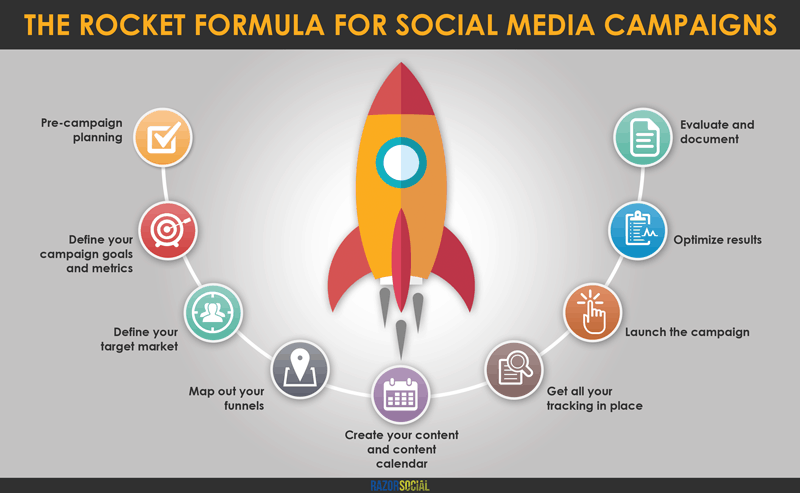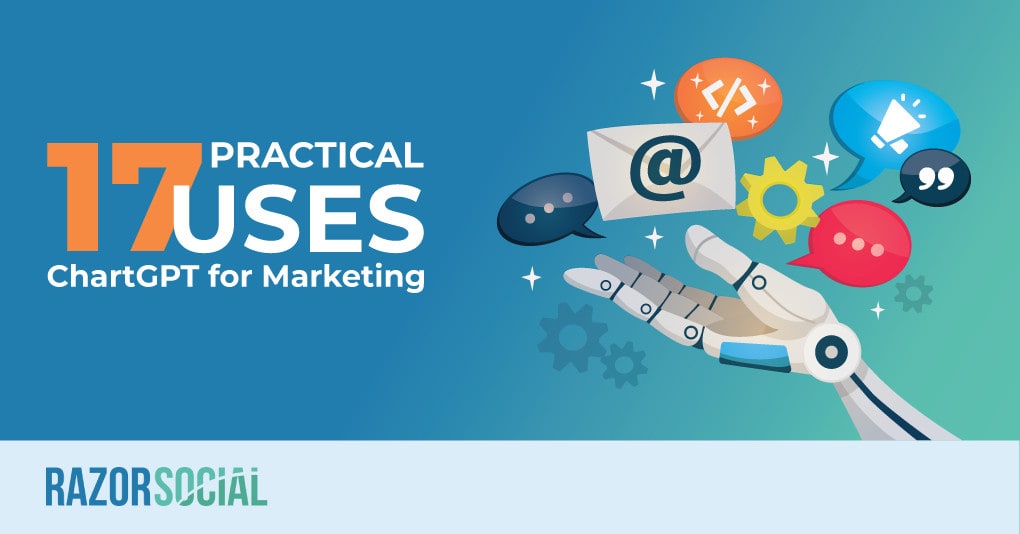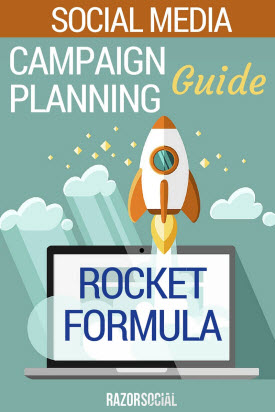
A social media campaign can deliver great results. It can also deliver really poor results and waste your money. What causes them to fail?
Not using cat videos… ha ha…
Ignoring cat videos, what really causes them to fail?
Planning.
SpaceX Falcon 9 recently returned to earth after the recent mission to outer space. This campaign cost $60 million! When you are creating a campaign such as this there is an immense amount of planning that goes into it to ensure success. When the rocket initially launches there is a massive output of energy.
With a social media marketing campaign you too have to put in a lot of planning up front if you really want your campaign to kick off. You may not have any budget at all to spend on your campaign but that doesn’t mean you can’t be successful.
And you want that massive explosion on launch!
Look:
Here’s revenue generated from an online training event we ran.

Notice something?
Revenue was generated at the start and at the end. Will this affect the planning for our next training event we run?
Absolutely. You need to learn from every campaign.
No time to read this article now? Download the PDF Version for future reference!
[/box_yellow]
But here’s what you need to do to plan your campaign:
- Pre-campaign planning
- Define your campaign goals and metrics
- Targeting – who you are going to target and how
- Map out your funnels
- Create your content and build your editorial calendar
- Get all your tracking in place – goals, URL builder, etc.
- Campaign Launch
- Optimization – assess and adjust
- Evaluate at the end of project.
We call this the rocket formula, so of course we have an image of a rocket!
1. Pre-Campaign Planning
When you have the idea for the social media campaign in your head, you need to do some preparation work before you even start planning for it. This could involve the following:
a) Channel investigation
Based on the channels you are currently active on, consider whether they are the right channels for the type of campaign that you are going to launch.

You may need to start building a presence on a new channel or start building relationships with key influencers on an existing channel.
For example, you think that Pinterest is going to be a very effective channel for your campaign but you don’t have a presence on Pinterest. You can do some focused work on building a presence on Pinterest or seek out key influencers on Pinterest who have access to your audience. Tailwind is one of the best apps for managing Pinterest.
Building a relationship with these influencers takes time so, before you kick off the campaign, you need to build the relationship.
How do you identify influencers on each of these channels? Use tools such as Traackr, Littlebird, Buzzsumo and others.
b) Building your audience
On each of the relevant channels, you may want to see how you can build a bigger audience to promote to.
One way of building an audience to promote to is add Facebook pixels to your website so you can start targeting website visitors with ads.
But…
…you want to set this up well before you launch your social media campaign.
You may also want to use some tools to build your audience quickly. For example, ManageFlitter and Social Quant enable you to build your audience on Twitter more quickly than you’d be able to do it yourself.
Here’s an example of using Social Quant to build a following on an account quickly over a short period.
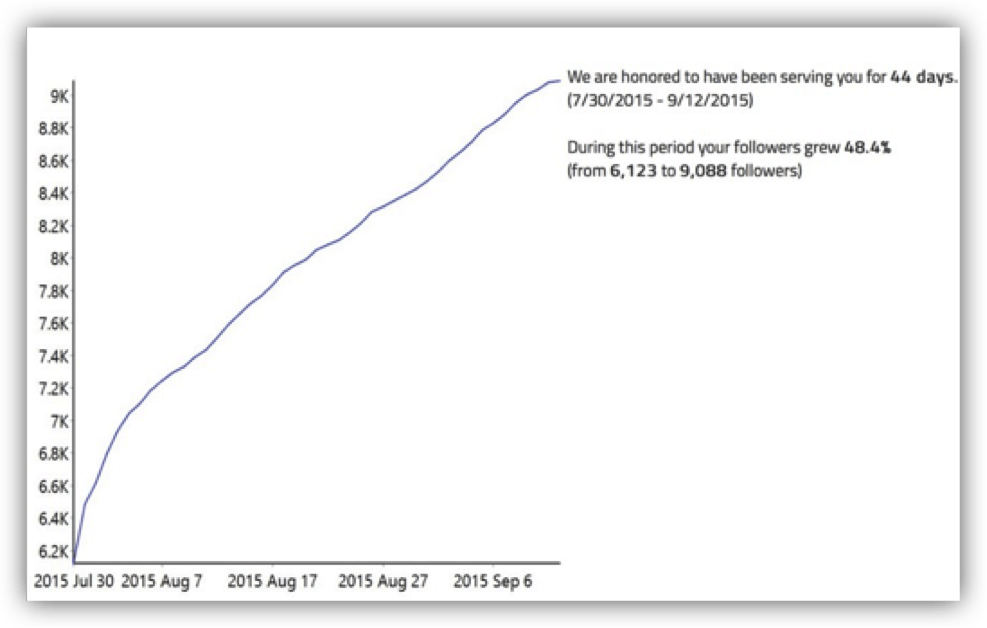
c) Evaluating other campaigns
Coming up with new unique campaigns is very risky and possibly very rewarding.
But…
…for most of us, it’s going to be better and quicker to find a company that has invested a lot of money in trying out campaigns. We can just come up with our own variation based on what they have delivered.
Here are some successful social media campaign ideas to evaluate:
- Forbes top 3 social media campaigns 2015
- The Webby awards social media campaigns
- 12 Best social media campaigns eConsultancy
d) Define your hashtag
You may want to associate a hashtag (for example a Twitter hashtag) with the campaign so you should do some research to figure out which hashtags are taken already and which could be useful. Ritetag is a useful tool to research hashtags.
Actions
- Set up a Facebook pixel to build your audience
- Identify relevant influencers and start building a relationship with them
- Review similar campaigns and document ideas.
Useful Resources:
Setting up your Facebook pixel and setting up conversion tracking on Facebook ads
Define your social media campaign goals and metrics
With clearly defined and measurable goals, you’ll have a much better chance of success. Here are some example goals — you’ll need to turn these into measurable goals:
- Build brand awareness
- Generate sales.
Brand awareness
Social media is another channel to help get the word out about your products and services. Imagine if you were launching a new company and you wanted to get more people to know about your product or service. A good starting point would be to create an amazing piece of content on your blog and reach out to various channels to promote this content. (check out this report on content marketing)
You’re creating something of value that people will share.
People will visit your blog and will be impressed with your expertise and hopefully remember you!
For brand awareness, you need to think about how you are going to measure this. For example:
- The growth of your following
- The engagement – if your new followers are not engaging then you’ve the wrong content or the wrong followers
- The traffic generated to your website and the result of this traffic.
A key part of building awareness could be an influencer outreach program where you identify influencers, reach out and build relationships. By getting them to promote your content to their channels, you can help increase awareness, traffic, sales etc.
There are some great tools for measuring all this activity, for example:
- Google Analytics – track all your traffic (make sure you set up goals, see later in this document)
- Platform analytics – Platforms provide free analytics tools that will help you assess how things are working / not working (e.g. analytics.twitter.com)
- Third-party analytics – There are also many third-party analytics platforms that can help, for example, SimplyMeasured, Quintly or Sotrender.
Generate Sales
When you build an audience and then build a relationship with this audience (through conversation or providing valuable content), you have a warmer audience that is more likely to take action (providing they are relevant to you). It’s easier, then, to get your audience to take action and visit your website.
When someone visits your website from a link on a social media channel, the majority of times they are not ready to buy…
… but this doesn’t mean they won’t buy!
You need to encourage them to take the next step, which could be to sign up as an email subscriber. Follow our PRISM funnel model.

You can then offer them a product, perhaps over the course of a series of interactions over email, or you could sell sometime in the future.
Getting your social media fans/followers onto your email list needs to be a priority as you’ll get more sales that way.
We all know that relationships are important and relationships with the right people can lead to sales. Social media can be a very effective tool for building those relationships and then you can encourage people to take the next step.
You can track your promotion on social media channels, and measure the traffic generated and sales as a result of this. This is where your funnels and your social media campaign are going to be extremely important.
Useful Resources
Hubspot – How to set social media marketing goals
6 Steps for influencer engagement
No time to read this article now? Download the PDF Version for future reference!
[/box_yellow]
Create Your Schedule
A campaign has a specific start date and end date.
Within these dates, there’s a series of activities/promotions to deliver your end result, with some assessment along the way.
You can just create your schedule in a Word doc or an Excel doc or a use a project planning tool.
Targeting
With your pre-campaign planning, you will have done initial research into who you should target. You will have evaluated the channels to make sure you are on the same channels as your target audience and you will also have done some work identifying the influencers.
You now want to narrow this down.
a) Facebook retargeting
You have set up your Facebook pixel in the pre-campaign planning phase and any visitors to your website are now tracked. For targeting, you may want to create a custom audience that is a subset of the total audience and use this for targeting.
For example, the custom audience could be people who have visited certain parts of your website and these are the people who are more likely to be interested in your campaign.
This video from Digital Marketer shows you how to get started:
https://www.youtube.com/watch?v=ZIIvgpInQvc
b) Influencers
As part of the pre-campaign planning, we mentioned doing initial research to identify who the influencers are in your industry. You need to create a list of the top influencers you want to be involved in your campaign.
Ideally, as part of the pre-event planning phase, you have started reaching out and interacting with influencers. Some of them will ignore you and some will engage with you.
For the ones who engage, you need to evaluate whether they are the right people to help with your campaign.
- Do they have a relevant target audience?
- Do they have an engaged audience?
- Are they open to promoting your campaign? This doesn’t have to always be a paid approach. You can come up with some agreement where money does not exchange hands.
At this stage, you’re going to further define this to clearly identify the people you want to target.
Use Traackr, Buzzsumo or similar tools to identify the influencers.
c) Everyone else!
Which other people are you going to target and how you are going to target them?
Think about:
- Sharing your content on social channels – Based on the channels you have selected, you’ll be able to target your ideal audience.
- Groups – There are many groups that could be great for targeting your social media campaign. For example, identify relevant Facebook groups and reach out to the moderator of the group or reach out to someone who is influential in the group.
- Email list – Your email list will be important to target. You might want to create a sequence of emails for your entire email list or you could target specific parts of your email list. Be sure to encourage your email subscribers to share details of your campaign on social channels.
Build out your funnels
Your funnels are the sequence of possible events that will make all the difference to get results for your campaign. Here’s a very basic funnel:

They work by directing prospects who are interested in what you do through a series of systems that encourage them to convert.
For example, you share a tweet related to a campaign, which leads to a landing page on your website. Someone opts in on your landing page and then you offer them your promotion. They buy this promotion and they go to the thank you page. This is your funnel.
Your second funnel could be someone going from a Facebook Ad directly to your promotion.
You need to think about all the possible funnels and the routes these funnels could take. For example, maybe you’ll create a Facebook ad retargeting visitors who didn’t optin on your landing page.
Create Your Content
The content assets you create will be used to promotion the content.
You will want to create content around your campaign, so create interest and encourage people to enter your sales funnel.
You will create some of this content in advance of the campaign and some during the campaign.
Some of the types of content you’ll need to create are:
- Social media content – Prepare tweets, Facebook updates, images for Pinterest and more. This doesn’t mean you can’t be spontaneous too, but having a bank of updates ready to go will help.
- Blog posts – Create content for your blog on topics that are relevant to your campaign so you can guide your readers to engage with you.
- Guest blog posts – Get the word out by creating guest posts for the blogs of your chosen influencers and other relevant blogs in your niche.
- Imagery – You’ll need to create great imagery that can be used within blog content, shared on social channels and used within advertisements. When you create your imagery you can call in the help of a designer or use a tool such as Canva.
- Video and audio content – Think about going multimedia and creating YouTube videos and podcasts, or being a guest on other people’s shows, to get the word out about what you are doing.
- User-generated content – User-generated content is a way of getting new voices on your site and social platforms. It might also be hosted elsewhere, but the key is that it is created by your customers, fans and colleagues.
People engage differently with different types of content, so the more variety you can create, the better. Check out this image from HubSpot with some more content ideas:
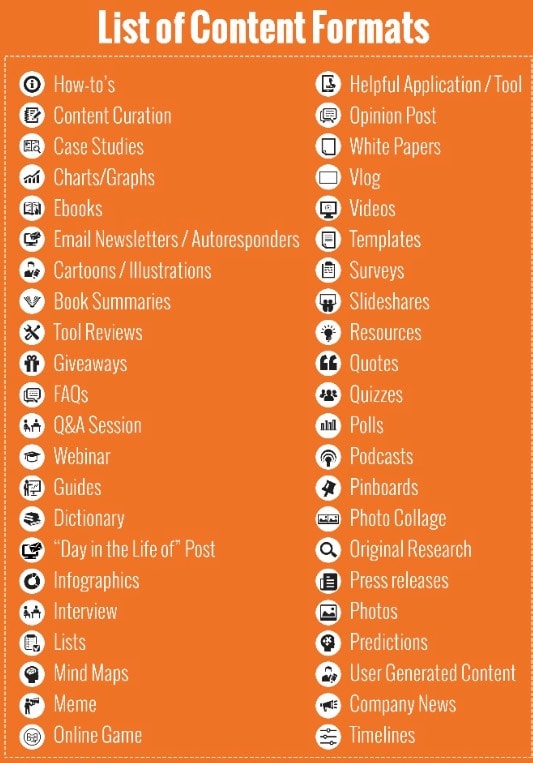
Set up all your tracking
A crucial part of any social media campaign is its tracking. You want to track as much as possible so you can assess performance as you are running the campaign. This will also help you to improve follow on campaigns.
Here are some considerations for your tracking.
Using UTM tracking codes
When you send out a message about your campaign through a Facebook ad, and you share the same message on your Facebook Page, how do you know which link directed traffic back to your website?
On your website, you will see that traffic came from Facebook but you won’t know from where!
It’s essential to figure this out.
At the start of the social media campaign, you need to create unique links that you will share across different social channels, email, website etc. These links will help Google Analytics to decipher where the links are coming from.
The way you do this is through UTM tracking codes.
You create a link for a Facebook ad and you add additional information to that link to show that it is from a Facebook ad.
One tool for creating these links is the Google Analytics URL builder (only available on Chrome). In the following, we have:
- Entered the website link
- Defined the source (where we are going to share) as Facebook
- Defined the medium (how we are going to share) as Status update
- Defined the campaign (what all the sharing is about!) as Blog promotion.

You then have a link that contains all of this information. With the above tool, you can create a shorter link (using bit.ly) and then you use this for sharing your Facebook updates. You then create a separate link, which is for Facebook ads, LinkedIn status updates, website links etc.
What happens now is that, in the campaign section of Google Analytics, you’ll see all traffic split out for this particular campaign. You can now see what is working!

b) Create goals
You also need to create goals in Google Analytics so you can track your conversion results. For example, when someone clicks on a tweet, arrives on your optin page and then opts in, your goal is achieved.
To make sure this is tracked, you can set up a goal in advance. In the admin section of Google Analytics, you define what the goal is and then you can start tracking these goals.
Read this: Google URL Builder: How to Track the Links You Share.
Launch
You are now ready to launch your social media campaign.
Here are some of the tools you’ll need:
- Social media management tools – Use tools such as Post Planner, Agorapulse or Sprout Social to schedule out your social media updates and track all the results.
- Campaign tools – There may be specific tools you want to use to run things like competitions. You’ll need to set up these tools and kick off the competition. For example, Shortstack is a great tool for this.
- Tracking tools – You’ve set everything up already but you’ll need to start looking at your analytics. An advanced tip is to create a Google Analytics dashboard that focusses specifically on the results that you want to track.
- Email – You’ll want to schedule out all your emails and create all the email sequences.
- Social Media Monitoring tools – You’ll want track mentions of your campaign and respond to some of these mentions. You might track certain words, hashtags or people. Use a tool such as Talkwalker alerts (free web monitoring) or Brand24 (full monitoring).
Optimization
Your social media marketing campaign will never run perfectly so you’ll need to track results and then optimize during the campaign. Here are some optimization tips:
a) Landing page split testing
When you direct people from social media to a landing page, you can improve conversions by split testing.
Start off with two completely different landing pages and split test to see which one performs better. For example, we recently ran a webinar and tested two completely different landing pages. The second landing page achieved 25% higher conversion rates than the first one.


This is why you really need to optimize your results. For this campaign, I improved the performance of my campaign by 25%.
For this test, I used Leadpages to split test the landing pages but I could have used various other tools, such as Unbounce, Visual Website Optimizer, Optimizely, Google Content Experiments etc.
b) Social media engagement
Track what activity is generating the most engagement and do more of this activity.
Your management tool will show you the results of what’s working/not working.
c) Paid promotion
Analyze the results of your paid promotion and adjust accordingly. If you are using Facebook ad make sure you have conversion tracking set up.
Documenting Results
Once your social media campaign is over, it’s extremely important to document your results.
- What optimization did you perform? What worked didn’t work?
- What traffic was generated, where did it come from and what were the results of the tracking?
- Which influencers generated the best results for the campaign?
You’ll then feed this information into the next campaign.
No time to read this article now? Download the PDF Version for future reference!
[/box_yellow]
Summary
A social media campaign does require significant work but, with the right planning, you can get great results. Create your plan, implement and document results etc etc.
Will you use the Rocket formula?

